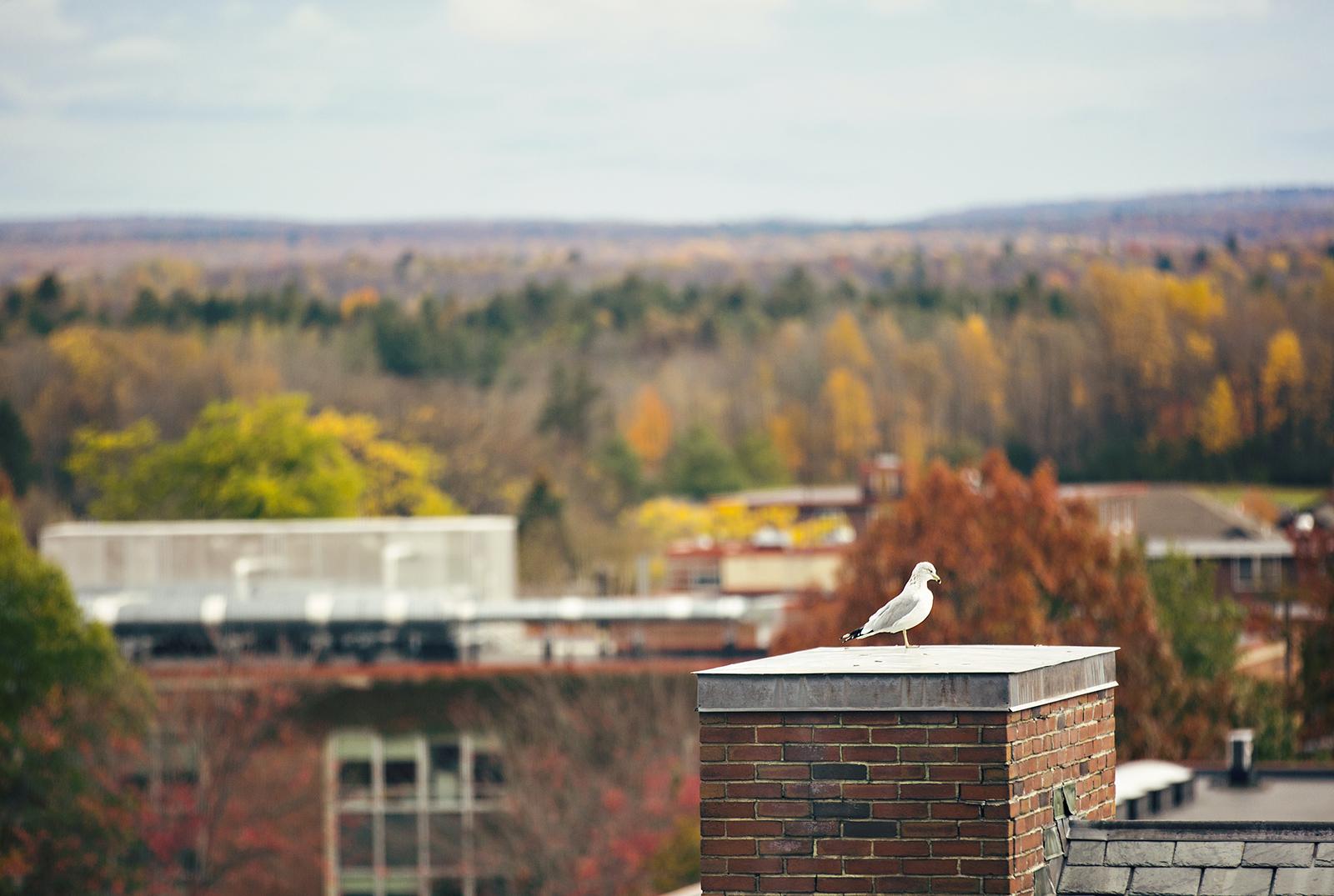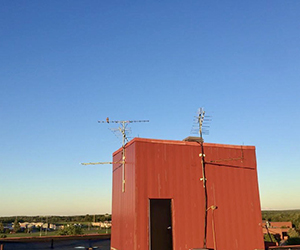Motus Wildlife Tracking System Allows Unprecedented Research Collaboration

A rooftop on SUNY Potsdam’s Bowman Hall has become one of the stages for the world’s largest web of receivers designed to track radio-tagged animals, ranging from aquatic creatures to migrating birds.
Crews installed an array of eight antennae atop the residence hall and brought them online late last month, as part of the Motus Wildlife Tracking System. The collaborative, automated telemetry project is a central hub for data from more than 750 receiving stations capable of charting bird movements on a hemispheric scale. The information is widely available to researchers as well as the public, and harnesses the resources of many independent researchers who might not be able to collaborate otherwise.
New installations for the system in Northern New York have gone online in the past month at the Upper and Lower Lakes Wildlife Management Area near Canton, the Perch River Wildlife Management Area north of Watertown, and at Murcrest Farms near Copenhagen.

SUNY Potsdam Biology Professor Dr. Glenn Johnson advocated to have Bowman Hall included in the network when he learned that Motus project managers were scouting Northern New York sites.
“We have the tallest buildings in the county, with our physical plant,” Johnson said. “Down the line, I will be able to utilize the data generated for both research and classroom activities.”
Uses for the data gathered from Motus include migration education and the study of the movement and behavior of animals that are subjects of conservation or management efforts — northern saw-whet owls in particular. The Bowman Hall array is the latest in a push to expand coverage in the Northeast, and is one of 40 in the latest phase of installations in New York, Pennsylvania, New Jersey, Delaware and Maryland set for 2019-20.
“SUNY Potsdam fits into a network of more than 900 Motus stations worldwide, working together to piece together the mysteries of migration,” said project manager Alison Fetterman. “Our Northeast Motus Collaboration has put up over 75 stations in Pennsylvania, New York, Maryland, Delaware, and soon New Jersey and the New England states, to create an interior Motus station network.”
The Northeast Motus Collaboration is a cooperative effort between the Willistown Conservation Trust, Project Owlnet, the Ned Smith Center for Nature and Art, and the Carnegie Museum of Natural History.
SUNY Potsdam’s Department of Biology is grounded in the principle that every student should receive a quality education fitting their interests. Undergraduate research is embraced, with opportunities for hands-on learning in the fields of ecology, evolutionary biology, cell and molecular biology, environmental science, and anatomy and physiology. The department also operates the Wagner Institute for Sustainability and Ecological Research. For more information, visit https://www.potsdam.edu/academics/AAS/biology.
About SUNY Potsdam:
Founded in 1816, The State University of New York at Potsdam is one of America’s first 50 colleges—and the oldest institution within SUNY. Now in its third century, SUNY Potsdam is distinguished by a legacy of pioneering programs and educational excellence. The College currently enrolls approximately 3,600 undergraduate and graduate students. Home to the world-renowned Crane School of Music, SUNY Potsdam is known for its challenging liberal arts and sciences core, distinction in teacher training and culture of creativity. To learn more, visit www.potsdam.edu.
